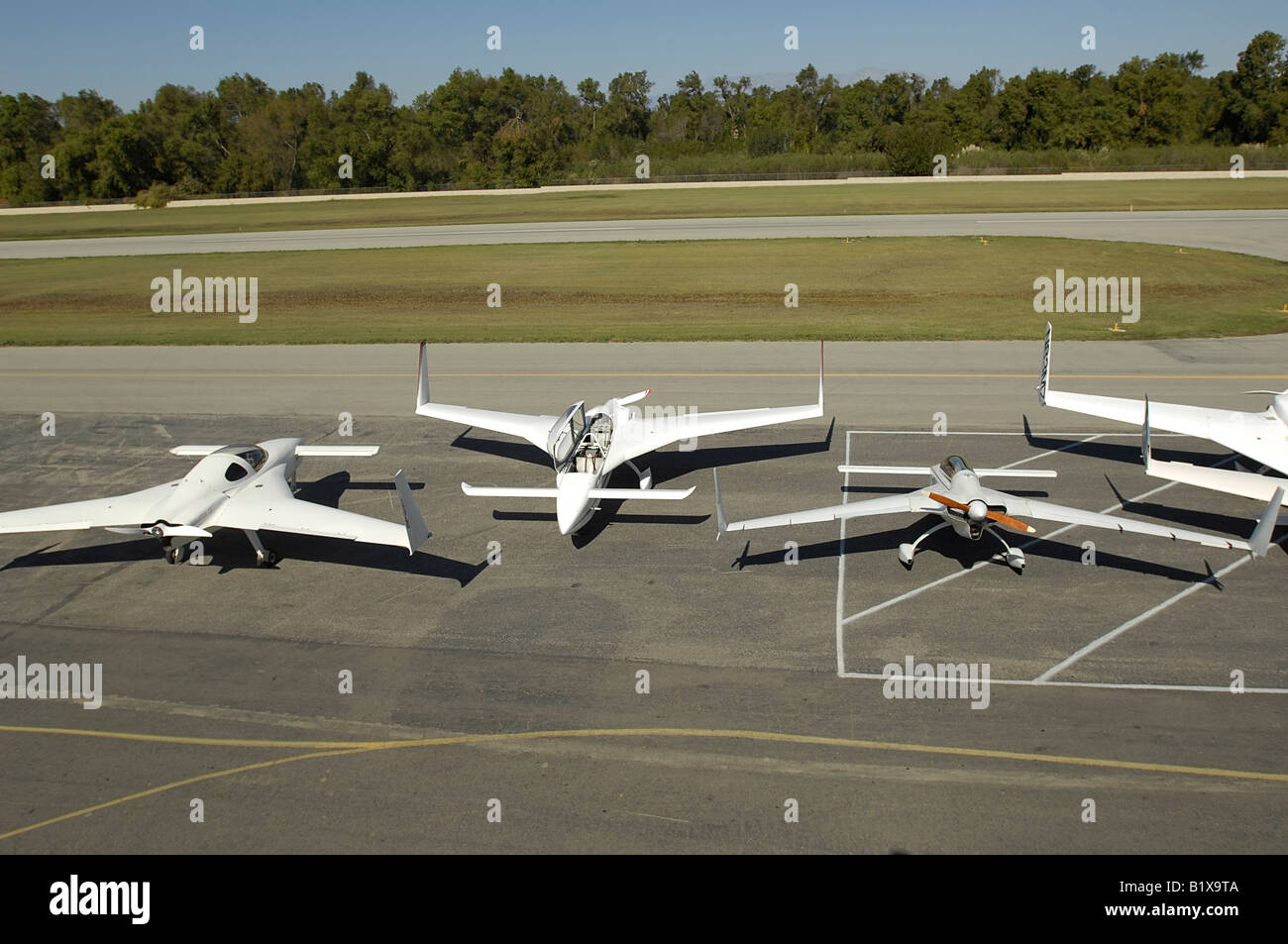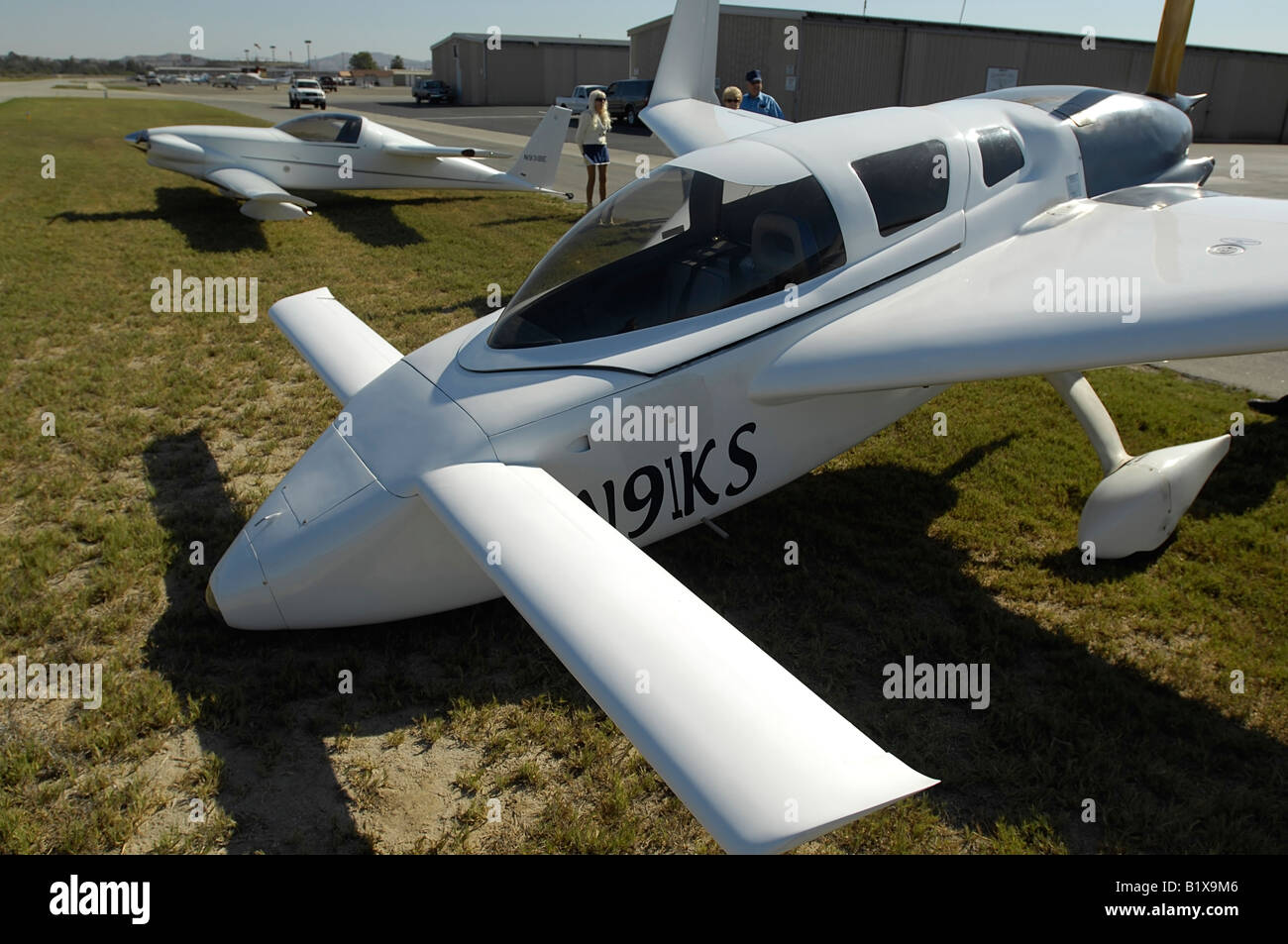Homebuilt Experimental Aircraft - Homemade airplanes, also known as amateur airplanes or airplane kits, are constructed by people for whom it is not a professional activity. These aircraft can be built "from scratch", from blueprints or from assembly kits.
In the United States, Brazil, Australia, New Zealand and South Africa, home-built aircraft may be licensed for experimentation under FAA or similar local regulations. With some limitations, the creators of the plane had to do it for their own education and recreation, not for profit.
Homebuilt Experimental Aircraft

The repair certificate enables its holder to independently carry out and sign most of the maintenance, repairs and inspections.
Buying Used: The Pulsar
Alberto Santos-Dumont was the first to offer free construction plans and published drawings of his Demoiselle in the June 1910 issue of Popular Mechanics.
The first aircraft offered for sale as an aircraft rather than a finished aircraft was the Baby Ace in the late 1920s.
Canada's first homemade aircraft, the Stitts SA-3A Playboy CF-RAD, first flown in 1955, see Canada Aviation and Space Museum.
Homemade airplanes became popular in the United States in 1924 with the start of the National Air Races held in Dayton, Ohio. These races called for aircraft with a payload of 150 pounds (68 kg) and legs of 80 cubic inches or less, and as a result of class restrictions, most were built by amateurs. The years following Charles Lindbergh's transatlantic flight saw a peak of interest between 1929 and 1933. During this period, many aircraft designers, builders, and pilots were self-taught, and the high accident rate led to public condemnation and increased regulation of amateur construction. The resulting federal standards for design, construction, stress analysis, air-grade equipment use, and aircraft testing gave rise to amateur building except in some specialized fields such as racing. In 1946, Goodyear resumed the National Air Races, including a class for aircraft powered by engines 200 cubic inches and smaller. The Midget Racer class has spread throughout the United States across the country, leading to a demand for acceptable standards for recreational use of amateur aircraft. In the mid-1950s, both the US and Canada allowed amateur aircraft again, subject to certain standards and restrictions.
Stits Sa 2a Sky Baby World's Smallest Aircraft World Record Record Breaker Experimental Homebuilt..., Stock Photo, Picture And Rights Managed Image. Pic. Mev 11958031
Home-built aircraft are generally small, one- to four-seat sport aircraft that use simple construction methods. Wooden or metal frames and fabric-covered plywood are common in aircraft construction, but fiberglass and other composites are increasingly being used as well as all-aluminum construction techniques, techniques pioneered by Hugo Junkers as early as the end of World War I. the gins are usually the same or similar to the gins used on certified aircraft (such as Lycoming, Continental, Rotax and Jabiru). A minority of home builds use reworked car engines, with Volkswag air-cooled four-cylinder engines, Subaru-based liquid-cooled Genes, Mazda Wankel six-cylinders and Chevrolet Corvairs. The use of automotive engines helps reduce costs, but many builders prefer dedicated aero engines, which are perceived as better performance and reliability. Other genies used include chainsaw and motorcycle genies.
The combination of costs and litigation, especially in the mid-1980s, discouraged general aviation manufacturers from launching new designs, and drove the sales of home-built aircraft in factories to over five to one.
The history of amateur-built aircraft dates back to the beginnings of aviation. Although the Wright brothers, Clémt Ader, and their successors had commercial goals in mind, the first airplanes were designed by passionate socialists with the goal of flying.

Aviation took a step forward with the industrialization that came with the First World War. In the post-war period, manufacturers had to find new markets and introduced models for tourism. However, these machines were only available to the very wealthy.
Kitplanes Homebuilt Aircraft Aviation Magazine January 1996 Composite Air Master
Many American aircraft designed and registered in the 1920s have been declared "experimental" by the (th)CAA, the same registration under which modern domestic special airworthiness certificates are issued. Many were prototypes, but designs such as Bernard Pietpol's first design in 1923 were among the first home-built aircraft. In 1928, Hri Mignet published plans for his HM-8 Pou-du-Ciel, as did Pietpol for his Air Camper. Pietpol later built a factory, and in 1933 began making and selling partly built aircraft kits.
In 1936, an association of aviation amateurs was founded in France. Many types of amateur aircraft began to appear, and in 1938 the regulations were changed to provide a Certificat de navigabilité restreint d'aéronef (CNRA, "Restricted Aircraft Operating Certificate"). In 1946, the Ultralight Aircraft Association was born, which in 1952 turned into the Popular Flying Association in Great Britain, and then in 1953 into the Experimental Aircraft Association (EAA) in the USA and the Sport Aircraft Association in Australia.
The term "house building" became popular in the mid-1950s when EAA founder Paul Poberezny wrote a series of articles for Mechanix Illustrated explaining how you could buy a set of blueprints and build your own airplane at home. In 1955, Poberezny co-founded with Robert D. Blacker the first EAA youth program, Project Schoolflight, which introduced "home building" to industrial art classes in high schools across the United States. Poberezna's Mechanix Illustrated articles gained worldwide recognition and the concept of aircraft building gained momentum.
Until the late 1950s, builders mostly stuck to wood and fabric and steel tubing and fabric designs. Without the regulatory constraints faced by aircraft manufacturers, home builders have introduced innovative design and construction techniques. Burt Rutan introduced the canard design to the housing world and pioneered the use of composite structures. Metal construction in kit aircraft has been taken to a new level by Richard VanGrunsva with his RV series. As kits became more sophisticated, components such as autopilots and more advanced navigational instruments became commonplace.
Piloted, Electric Propulsion Powered Experimental Aircraft Under Way
Litigation in the 1970s and 1980s stagnated the small aircraft market, forcing surviving companies to retain older prototype designs. In recent years, less restrictive home building regulations have enabled many manufacturers to develop new and innovative designs; many can outperform certified production aircraft in their class.
An example of advanced home design is Lancair, which has developed a range of high performance kits. The most powerful is the Lancair Propjet, a pressurized four-seat turboprop engine capable of flying at 24,000 feet (7,300 m) and 370 knots (425 miles per hour, 685 km/h). While such aircraft are considered "homemade" for legal reasons, they are usually factory-built with assistance from the buyer. This allows the company selling the kit to avoid a lengthy and explosive certification process as they remain owner-built according to regulations.
One term to refer to this concept is commonly referred to as the "51% Rule", which requires builders to do most of the fabrication and assembly work in order to obtain a certificate of airworthiness as an amateur aircraft.

A small number of jet aircraft have been built since the 1970s, including the small Bede Aircraft BD-5J.
The Homebuilt Aircraft Advantages And Other Considerations
Van's Aircraft and Aircraft Kit Industry Association (AKIA) president Dick VanGrunsv was asked about the future of the kit aircraft industry in an extensive interview with KitPlanes magazine in December 2012:
I do not expect dramatic changes in the industry in the next five years. T years; who knows - it depends too much on fuel prices, FAA policy, etc. Overall, I believe our industry will continue to mature, especially as AKIA is successfully growing and has a positive impact on the professionalism of its industry members and the builders/pilots of its products . When it comes to fuel prices, we can see a trend towards lower-powered aircraft that are more dedicated to pure sport flying than the trend towards cross-country aircraft that has been the norm for the last 30 years. I expect there may be some opportunities for electric aircraft design around this time, but only if battery technology improves significantly. We may see more home-built motor gliders linked to both high fuel prices and emerging electric propulsion technology. What we do at Van's may reflect some of the thinking above. Unfortunately, I don't see the growth potential that existed in the 1980s and 1990s. It seems that the base of pilots from which to draw people to build sets is shrinking. In addition, with demographic changes, the interest or ability to build airplanes as entertainment is likely to decline. We hope that the EAA and AOPA initiatives to get more people interested in learning to fly will help create a larger market for our aircraft. Emerging markets such as China and India could also increase demand for our products, but tire infrastructure will need to be established before small players like us can fit in.[12] Building Materials
Home-built airplanes can be constructed from any material that is lightweight and durable for flight. Some typical construction methods are described below.
Pietpol Air Camper under construction, showing a wooden frame structure that will be covered with aviation fabric.
Bearhawk Introduces 6 Seater
This is the oldest design, seen in the first aircraft, and thus the best known. For this reason, amateur aircraft associations will have more specialists in this type of craft than in other types.
The most popular types of wood are sieve and Douglas fir, which provide excellent strength to weight ratio
Experimental homebuilt, homebuilt aircraft for sale, homebuilt aircraft, cheap homebuilt aircraft, single seat homebuilt aircraft, most popular homebuilt aircraft, best homebuilt aircraft, homebuilt aircraft plans, experimental aircraft, homebuilt aircraft projects for sale, homebuilt aircraft for sale canada, 4 seat homebuilt aircraft
0 Comments